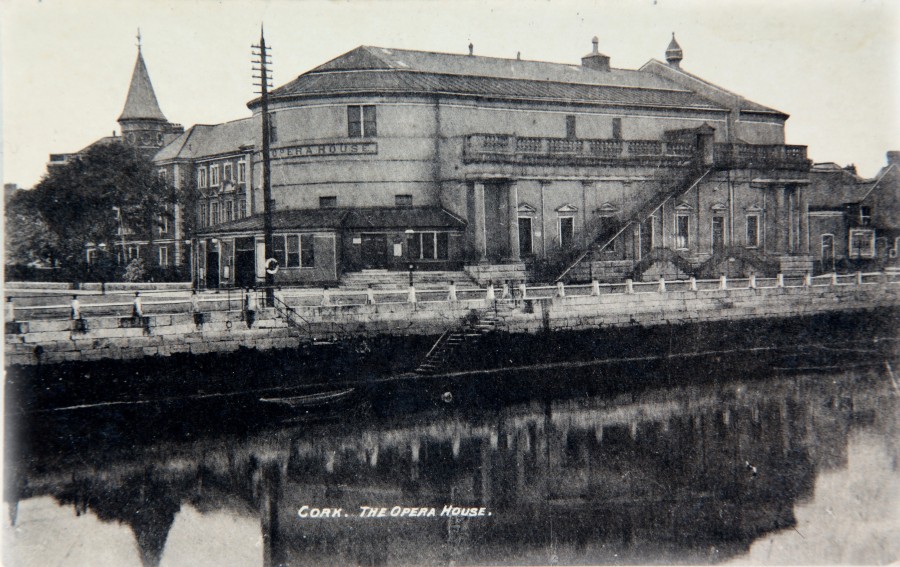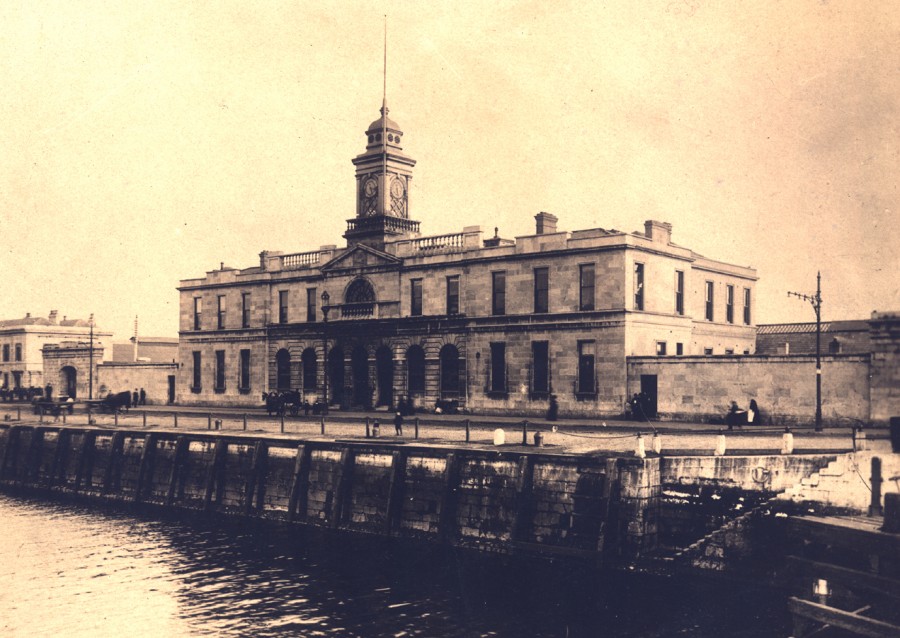Kieran’s Our City, Our Town Article,
Cork Independent, 4 January 2018
Stories from 1918: Entertaining the Citizens
The column for this year will continue to try to highlight everyday events and local history nuggets from this period of centenary commemorations. The year 1918 brought continuing challenges and opportunities to Cork and Ireland – elements such as rationing, war fatigue, renewed Sinn Féin vigour, the war ending – all offer lenses in telling the story of life in Cork one hundred years ago.
The first week of 1918 was filled with a host of entertainment options for Cork citizens at a variety of venues, all of which were described in the Cork Examiner. On New Years Eve, on 31 December 1917, the delightful musical comedy The Maid of the Mountains, by the George Edwards Company continued to attract an audience at Cork Opera House. It was the closing week of this company’s visit. George Joseph Edwardes was an English theatre manager and producer of Irish ancestry who brought a new era sin musical theatre to the British stage and beyond. Edwardes started out in theatre management and soon worked at a number of West End theatres. By the age of 20, he was managing theatres for Richard D’Oyly Carte and for the next three decades, Edwardes ruled a theatrical empire. He sent touring companies around Britain and abroad to entertain audiences with performances from Burlesque and Comic Opera to Musical comedy.
After the George Edwardes Company, the boards of Cork Opera were to be thread by The Warblers, the Cork Pierrot Concert Party. This was a variety show performed by a local company of actors and singers – they sang songs and made up their own parody songs. They performed at the Opera House for six nights and a matinee. A concert party, also called a Pierrot troupe, was the collective name for a group of entertainers, or Pierrots, popular in Britain and Ireland during the first half of the twentieth century. The variety show given by a Pierrot troupe was called a Pierrot show.
Mr Frank Pitt, manager of the Opera House, having the theatre vacant on Saturday night, 5 January 1918 offered free of cost, to the Society of St Vincent de Paul the space for a concert in aid of its funds. The concert had several singers. Selections were also given by the Butter Exchange Band, under the direction of Mr A K Ogden.
At the Palace Theatre on King Street on New Year’s Eve, another variety show took place. Amongst the more acclaimed acts was “The Great Como”, the Irish-American Illusionist. His feats had been seen before but were characterised by a “skill and smoothness”. The O’Brien Brothers as comedians and dancers entertained the crowds. The singer known as Wardini and Kathleen O’Mara represented the vocal contributors. The orchestra was under the baton of Mr R H Richards. Short films were also shown.
Further along on King Street was the Coliseum, which in 1918 had been five years in operation. On New Year’s Eve another variety show was presented. In addition to a fine picture programme, the group, The Cheeros, who were Pierrettes and Pierrots, were performing. They played to crowded houses. Mr J F Mullane was the musical director of the troupe, and the composer of the opening and finale choruses. The film side of the programme consists of a Human Sacrifice, a powerful drama in four parts. The manager, M Tighe was acknowledged in the Cork Examiner at securing a great programme.
In the city centre at the Father Mathew Hall the pupils of Mrs J F Lyons performed on the first week of January. The piece they presented was In the Days of Tara, written by Mr B McCarthy, Crosshaven. It was an interesting romantic piece and interspersed with popular Anglo-Irish songs with an elaborately well-dressed stage. On 30 January 1907, the Fr Mathew hall was opened on what was then Queen Street. There was a good auditorium for plays and concerts and plenty of rooms for activities such as a billiard room, a card room, a reading room. For a time, attempts were made to run pictures – it was called a Picturedrome. The Christmas Pantomines became popular – the cast being hall members and monies that were made defrayed expenditure. At different times, members organised dramatic societies, bands, orchestras and choral groups. Classes were held in cookery, sewing and needlework, gymnastics and first aid. Outdoor recreation comprised hurling, football and cycling.
On 4 January 1918, at Cork City Hall a treat was provided for the school children of the city. It was organised by the ladies of the Temperance League. The vestibule and entrances of the City Hall were besieged by an eager and excited throng of juveniles long before the hour arrived for the starting of the concert. Between three and four hundred were admitted but many more hundreds of children had to be refused admission. Their disappointment was somewhat relieved when they were told that the performance would be repeated in the afternoon, and those turned away would be prioritised. Greenmount Industrial School Band lent an added feature of entertainment and the magic lantern picture display, presented by Mr C Fielding was also enjoyed by the children. The other contributions included those by Fr Christy O’Flynn, the girls of the North Presentation Convent and St Marie’s of the Isle school, as well as Greenmount Dancing Class, and Mr Dan Hobbs.
Note: All the 2017 Our City, Our Town columns can be accessed on my website www.corkheritage.ie under the index to the Cork Independent column section.
Captions:
927a. Postcard of the old Cork Opera House, early twentieth century (source: Cork City Through Time by Kieran McCarthy & Dan Breen; Cork City Museum)
927b. Old Cork City Hall, c.1910 (source: Cork City Through Time by Kieran McCarthy & Dan Breen; Cork City Museum)

